Jump To:
1940
Leonard Parker Pool founded his company to meet the needs of the mid-level oxygen consumer. Although his idea to combine existing technology with a novel marketing concept was ingenious, immediate orders were not forthcoming. Frustrated but undaunted, Pool seized opportunity and instead, sold oxygen generators to support military efforts during World War II.

Leonard Parker Pool founds Air Products in 1940 in Detroit, Michigan, on a simple, but revolutionary, idea: the "on-site" concept of producing and selling industrial gases.
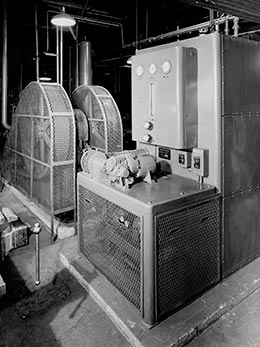
Air Products leases its first oxygen gas generator to a small Detroit steel company in 1941.
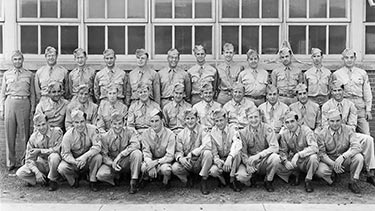
World War II diverts the company's attention to the design and manufacture of mobile generators to produce oxygen for use by the military in high-altitude flights.
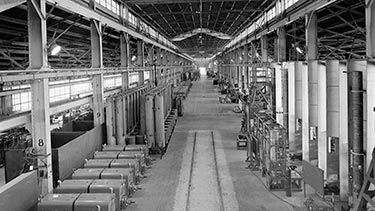
In 1944, Air Products moves to Chattanooga, Tennessee and produces 240 oxygen generators for the armed forces and for "lend-lease" to foreign allies.
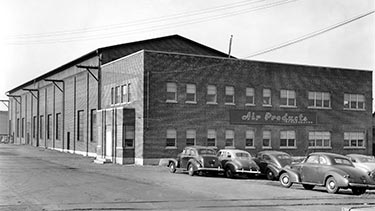
After the war, the company refocuses its sights on commercial markets by setting up operations near Allentown in Pennsylvania's Lehigh Valley.
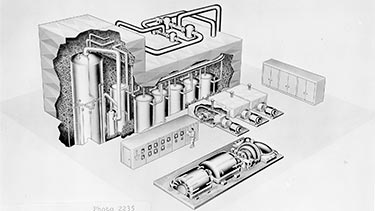
In 1945, Air Products secures a contract with Weirton Steel Company in West Virginia to lease three generators that produce six tons per day of oxygen.
1950
In the post-war years, abundant oxygen was transforming the gas industry. Company founder Leonard Parker Pool was determined to compete in this "tonnage" gas market, and his plan proved as inventive as his on-site concept. Liquid hydrogen, a substance considered a laboratory curiosity, became an in-demand product in the later years of the decade, offering the company a new opportunity.

In support of America's emerging missile and space program, Air Products builds plants capable of producing tonnage quantities of liquid oxygen and nitrogen.
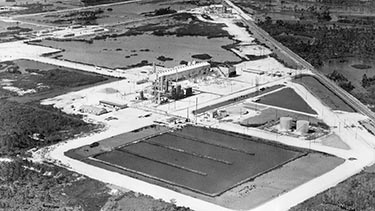
With the launch of Sputnik in 1957, Air Products wins the competition to make a new rocket propellant – liquid hydrogen – for the Air Force and later NASA at the legendary "three bears" plants.

The marketing concept known as "piggy-backing" is introduced — building extra gas liquefaction capacity into the on-site plants. Mississippi, U.S.

In 1957, Air Products enters the international market for industrial gases through Air Products (Great Britain), Ltd., a joint venture with the Butterley Company.

Air Products begins construction of its new home in Trexlertown, Pennsylvania, complete with an administrative building, power house, manufacturing facility, and warehouse with truck loading dock. The Trexlertown site continued to expand significantly over the next six+ decades, serving as the company's headquarters.
1960
Many of the company's offerings, including oxygen and hydrogen, are building-block chemicals. Air Products took advantage and diversified into a wide range of process intermediate chemicals. Elsewhere, engineering talent created a new opportunity in helium that led to a worldwide production and supply leadership position.
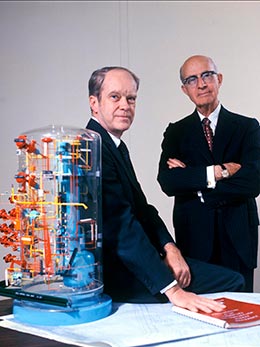
In 1960, company founder Leonard Parker Pool is featured on the cover of Business Week.
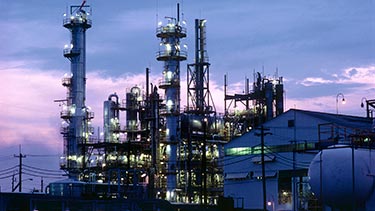
In 1961, Air Products begins manufacturing chemicals through a joint venture to convert refinery by-products into oxo-alcohols for use in producing plasticizers.
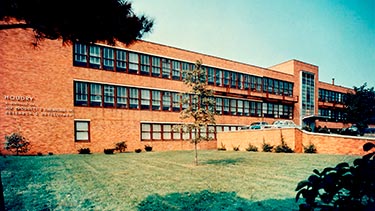
In 1962, the company acquires the Houdry Process Company and its subsidiary, the Catalytic Construction Company.

Air Products stock is listed on the New York Stock Exchange for the first time in 1962 as its sales pass $100 million.

In the mid-60s, the company widens its global presence with subsidiaries in Belgium, West Germany, and South Africa.
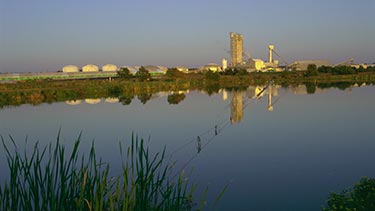
The company's position in chemicals expands with the 1969 acquisition of Escambia Chemical Corporation, a U.S. company in Pensacola, Florida.
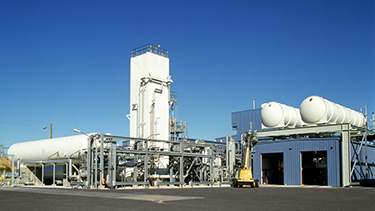
Air Products develops a process for the recovery of helium from natural gas, along with the process to liquefy natural gas using a heat exchanger.
1970
Although the company's earliest success was based on oxygen supply, its nitrogen applications increased in importance. The company also further invested in chemicals, making its entry into the electronics industry. By 1978, Air Products had become a Fortune 500 company on the strength of $1 billion in sales.
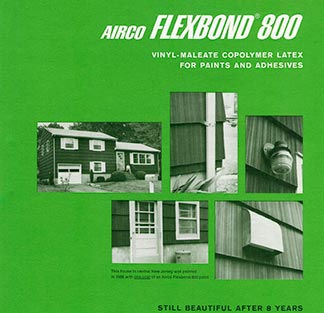
The business further expands in the '70s with the acquisition of the chemicals and plastics business of Airco, Inc. Over the next 40 years, the polymer emulsions business becomes the U.S. market leader, generating nearly $1 billion in revenues.
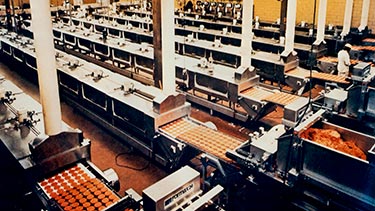
Early Cryo-Quick food freezing units helped revolutionize the American restaurant industry, enabling centralized food processing to ensure consistency.

Air Products is awarded a 12-year $287 million contract from NASA to supply liquid hydrogen to the United States' new space shuttle program.
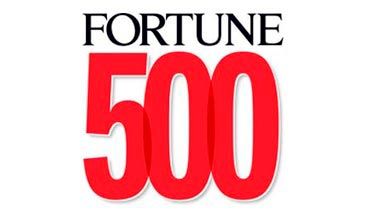
The company makes the Fortune 500 listing on the strength of $1 billion in sales.
1980
During the decade, the company further grew its global position through strategic equity positions and strengthened its chemicals and electronics businesses. It also entered its second stage of diversification into environmental and energy markets by focusing primarily on the emerging, high-temperature technology of cogeneration, trash-to-steam, and flue-gas desulfurization, as well as building a leading refinery hydrogen supply position.

Air Products undertakes a strategic global expansion by taking minority positions in industrial gas companies in Korea, Japan, Malaysia, Hong Kong, China, Thailand, Taiwan, and Mexico.

Air Products significantly expands the company's emerging epoxy curing agents business and gains a manufacturing foothold in Europe.
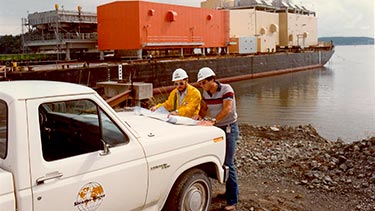
Air Products acquires Stearns-Roger Corporation, a U.S. leading engineering and construction services company based in Denver, Colorado.

In the mid-80s, the company forms an environmental and energy systems business to focus on power generation, air pollution control, and energy recovery from solid waste.
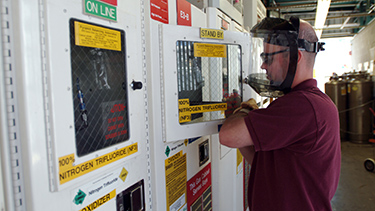
MEGASYS® Total Gas Management Services, an industry-first offering, is developed in response to customers who want more than just bulk and specialty gas. MEGASYS® services provide a deeper understanding of our customer's processes and the technology roadmap.
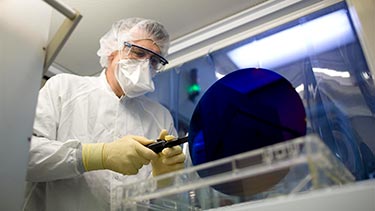
The company acquires the J.C. Schumacher Company, a supplier of high-purity chemicals for semiconductors, giving it a stronger foothold in electronic materials.

Spurred by new clean air regulations, increased use of high-sulfur crude oils, and larger demands for transportation fuels, the company forms a joint venture with KTI (now Technip) to build hydrogen processing equipment for oil refiners and becomes the leading global supplier of refinery hydrogen.
1990
Global expansion continued, as did the company's dedication to the electronics industry. Earlier development work with the U.S. government paid dividends, catapulting the company's electronics business to a worldwide leadership position.
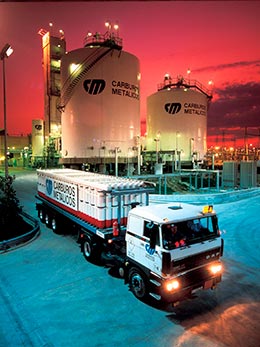
In the 1990s, Air Products acquires a 49 percent interest in Sapio in Italy, and completes the acquisition of Carburos Metálicos in Spain and Korea Industrial Gas.

In Asia, the company forms joint ventures with Japanese companies Daido Hoxan and Showa Denko to serve the growing electronics industry.

Air Products establishes a new company in Singapore, forms a joint venture in Indonesia, and opens new facilities at Tsukuba, Japan, to supply products to the Asia semiconductor market.
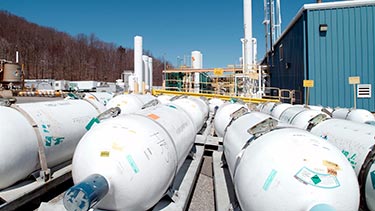
Nitrogen trifluoride—a material originally developed for laser weaponry in the 1960s—becomes the pre-eminent chamber cleaning material for the semiconductor industry. Air Products becomes the worldwide leader in production of this material.

The company acquires Permea, Inc., a leading supplier of membrane and adsorption gas separation systems.
2000
The company made additional strides toward becoming one of the world's leading integrated industrial gas companies and continues growing other business segments by leveraging existing capabilities and expertise and launching several game-changing technologies in the markeplace.
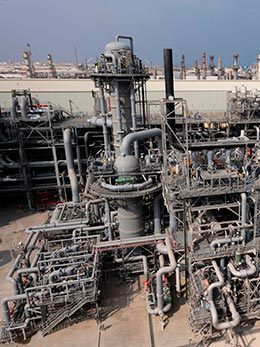
The company strengthens its worldwide leadership in natural gas liquefaction process technology by introducing a debottlenecking process that enables as much as a 60 percent capacity increase in production without sacrificing existing efficiency.

A series of game-changing gas cylinder innovations are introduced to the global marketplace.

Air Products’ industrial gas complex in New Orleans, La., is inundated with more than eight feet of water after Hurricane Katrina makes landfall. After ensuring its employees' safety, the company begins draining the facility and working to restore operations. It achieves the milestone of “substantial operations” in just over two months to help relieve a constrained liquid hydrogen market.
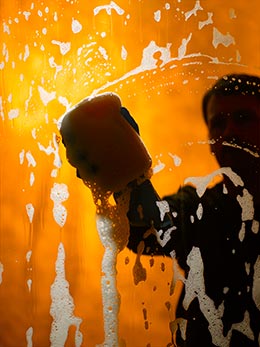
Air Products builds on its surface science expertise by acquiring Tomah³ Products for industrial and institutional cleaning.

Air Products becomes the leading industrial gas supplier in central Europe by acquiring the industrial gas business of BOC Gazy.

In 2008, Air Products commissions its new hydrogen fueling station at the company’s global headquarters in Allentown, Pa. Part of the Hydrogen Education Initiative, funded largely by the Federal Transit Administration, the station enables hydrogen-powered transportation vehicles to get out into the community to help educate the public about hydrogen and its capabilities.
2010
Air Products people bring their deep understanding and applications expertise to the industries and markets it serves all over the world. This combination of perspective and breadth allows them to apply solutions to some of the world's most pressing energy, environmental and emerging market needs. It's this "Air Products difference" that will continue to drive profitable growth and sustainability for Air Products and its customers in the decades to come.
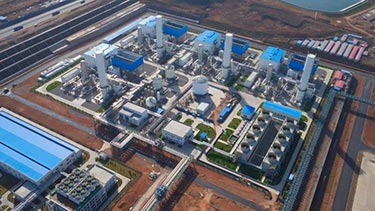
In China, Air Products lands its two largest ASU orders ever, the first with Shaanxi Future Energy Chemical Co., Ltd., (12,000 TPD of oxygen) and the second with Shanxi Lu’An Mining (Group) Co., Ltd., (10,000 TPD of oxygen). The ASUs are driven by large-scale coal gasification and petroleum projects throughout China.
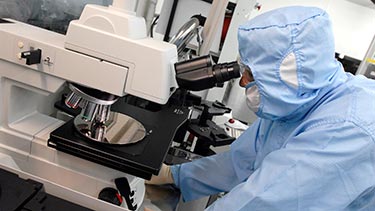
Air Products acquires DuPont’s interest in DuPont Air Products NanoMaterials LLC, the two companies’ 50-50 joint venture serving the global semiconductor and wafer polishing industries.
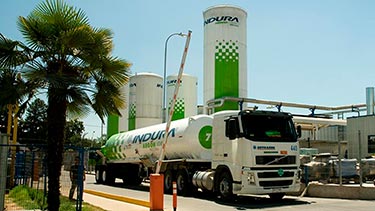
In 2012, Air Products acquires a controlling stake in INDURA, the largest independent industrial gas company in South America at the time. The acquisition brings new sales and gives the company a significant presence in a fourth region of the world.

Air Products acquires EPCO Carbon Dioxide Products, Inc. in 2013, adding liquid CO₂ to its North American offerings through EPCO’s 12 CO₂ purification and liquefaction plants.

In 2014, Air Products Board of Directors approves appointment of new Chairman, President and CEO Seifi Ghasemi , who develops a strategic Five-Point Plan to guide the company's future success.
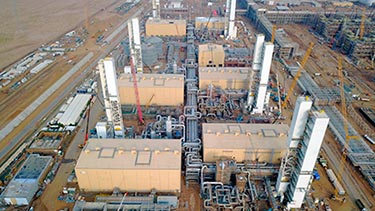
In 2015, Air Products is awarded a contract by Saudi Aramco under a joint venture of Air Products and ACWA Holding to build, own and operate the world's largest industrial gas complex to supply Saudi Aramco refinery being built in Jazan, Saudi Arabia.
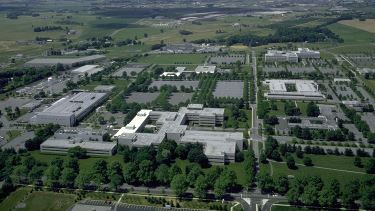
Air Products celebrates the the company's 75th anniversary in 2015, attributing much of its success to the know-how and innovative spirit of its employees and the willingness to seize opportunities for growth.
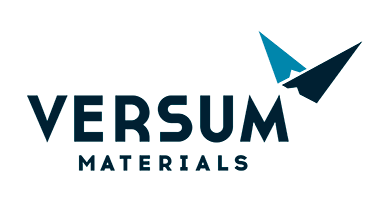
Executing on its strategic Five-Point Plan, Air Products completes the separation of its Electronics Materials Division through the spin-off of Versum Materials, Inc. in 2016.

Again executing on its strategic Five-Point Plan, Air Products becomes a pure-play industrial gases company in 2017 with the sale of its Performance Materials Division to German specialty chemicals producer Evonik Industries AG.
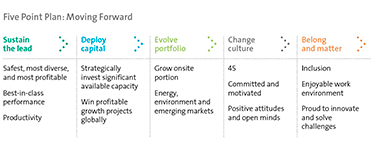
CEO Seifi Ghasemi implements the next phase of the company's strategic Five-Point Plan for success. Elevating diversity and inclusion into the company's goal, the evolved Plan continues to serve as Air Products' roadmap for driving safety, inclusion, profitability and sustainability into future growth.
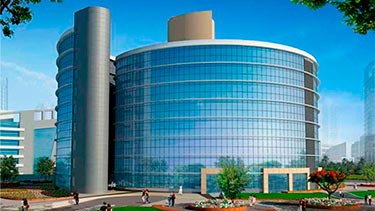
Air Products establishes a state-of-the-art technology center at Dhahran Techno Valley Science Park in Saudi Arabia; an advanced research and development center at Zhangjiang Hi-Tech Park in Shanghai, China; and a world-class engineering center at Pune in Maharashtra, India.
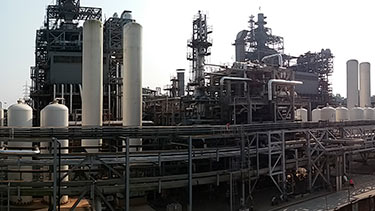
As part of its sale-of-gas business model, Air Products builds, owns and operates a world-scale industrial gas complex in Kochi, India, for Bharat Petroleum Corporation Limited (BPCL). The new facility, which houses a technologically advanced HyCO plant, enables BPCL to dramatically increase refining capacity for producing cleaner fuels. Also in India, Air Products' joint venture, INOX Air Products Pvt Ltd., celebrates 20 successful years of doing business in the fast-growing region. Pictured: Air Products' industrial gas complex supplies hydrogen, nitrogen, oxygen and steam to the BPCL Kochi Refinery.

With world energy demands, the environment, and emerging markets always on its radar, Air Products begins engineering, building, owning and operating the world's largest industrial gas projects. Through gasification, the company supplies syngas that enables customers and countries to convert plentiful, lower value materials into higher value products.
2020
Guided by the company’s strategic Five-Point Plan and due to the hard work and commitment of its employees, Air Products achieves its goal to become the safest and most profitable industrial gas company in the world. With a keen focus on innovating solutions to the world’s most pressing energy and environmental challenges, the company plays a leading role gasification, carbon capture technologies and hydrogen for mobility. By developing, executing, owning and operating megaprojects in these areas, Air Products helps drive significant sustainability benefits for the world while supporting the continued growth and success of the company well into the future.

Air Products demonstrates its culture and character as the company stands in solidarity in the world's collective fight against COVID-19. Designated by governments around the world as a "critical industry," Air Products responds to the crisis by continuing to run its facilities safely, delivering critical products to customers, and winning new projects, all while keeping health and safety its top priority.

Air Products, ACWA Power and NEOM sign an agreement for a world-scale carbon-free hydrogen-based ammonia production facility powered by renewable energy. Sited in NEOM, a new model for sustainable living located in the Kingdom of Saudi Arabia, the project will supply 650 tons per day of carbon-free hydrogen for transportation globally and save the world three million tons per year of CO₂.
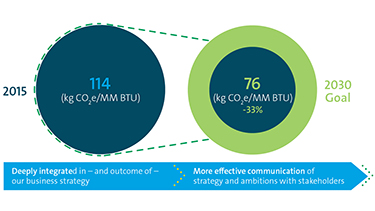
Aligned with the company's business strategy and higher purpose, Air Products sets a new sustainability goal to reduce its carbon dioxide emissions (CO₂) intensity (kg CO₂/MM BTU) by one-third by the year 2030 from a 2015 baseline. Key drivers to achieving the goal include carbon capture projects; low-carbon and carbon-free projects; operational excellence; and increased use of renewable energy.

As part of its goal to be the most diverse industrial gas company in the world, Air Products takes a measurable, transparent step to further increase the number of females and minorities in professional and managerial roles. By 2025, the company aims to achieve at least 28 percent female representation in these roles globally, and at least 20 percent minority representation in these roles in the U.S.
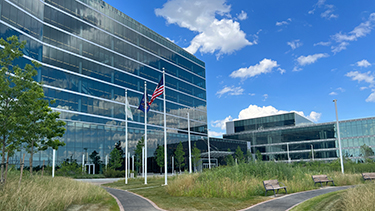
Air Products completes construction of its new global headquarters in 2021. Located just over one mile from its previous location in Trexlertown, the modern, sustainable facilities reflect the company's culture as a world-leading industrial gases company focused on generating a cleaner future by driving the energy transition.
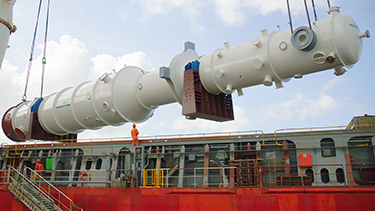
Air Products completes the sale of its liquefied natural gas (LNG) process technology and equipment business to Honeywell in September 2024. Company continues focus on its industrial gas business and driving the energy transition through clean hydrogen at scale.